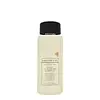What's inside
What's inside
 Key Ingredients
Key Ingredients

 Benefits
Benefits

 Concerns
Concerns

 Ingredients Side-by-side
Ingredients Side-by-side

Water
Skin ConditioningLauramidopropyl Betaine
CleansingCocamidopropyl Hydroxysultaine
CleansingSodium Cocoyl Isethionate
CleansingGlycerin
HumectantSodium Lauryl Sulfoacetate
CleansingDisodium Laureth Sulfosuccinate
CleansingAloe Barbadensis Leaf Juice
Skin ConditioningTocopheryl Acetate
AntioxidantCocos Nucifera Oil
MaskingPhenoxyethanol
PreservativeSodium Lauroyl Sarcosinate
CleansingSodium C14-16 Olefin Sulfonate
CleansingSoyamidopropylamine Oxide
CleansingPolyquaternium-71
HumectantMaltodextrin
AbsorbentSodium Cocoyl Glutamate
CleansingPanthenol
Skin ConditioningPolyquaternium-7
Sodium Hydroxide
BufferingCitric Acid
BufferingWater, Lauramidopropyl Betaine, Cocamidopropyl Hydroxysultaine, Sodium Cocoyl Isethionate, Glycerin, Sodium Lauryl Sulfoacetate, Disodium Laureth Sulfosuccinate, Aloe Barbadensis Leaf Juice, Tocopheryl Acetate, Cocos Nucifera Oil, Phenoxyethanol, Sodium Lauroyl Sarcosinate, Sodium C14-16 Olefin Sulfonate, Soyamidopropylamine Oxide, Polyquaternium-71, Maltodextrin, Sodium Cocoyl Glutamate, Panthenol, Polyquaternium-7, Sodium Hydroxide, Citric Acid
Water
Skin ConditioningSodium C14-16 Olefin Sulfonate
CleansingDisodium Laureth Sulfosuccinate
CleansingDisodium Cocoamphodiacetate
CleansingSodium Chloride
MaskingGlycol Distearate
EmollientAmodimethicone
Sodium Lauryl Sulfoacetate
CleansingPPG-5-Ceteth-20
EmulsifyingPotato Starch Modified
Cocamide Mipa
EmulsifyingCeramide NP
Skin ConditioningCeramide AP
Skin ConditioningCeramide EOP
Skin ConditioningCarbomer
Emulsion StabilisingNiacinamide
SmoothingTrideceth-6
EmulsifyingTriethyl Citrate
MaskingSodium Hydroxide
BufferingSodium Benzoate
MaskingSodium Lauroyl Lactylate
EmulsifyingSalicylic Acid
MaskingSodium Hyaluronate
HumectantCholesterol
EmollientCoco-Betaine
CleansingCitric Acid
BufferingCetrimonium Chloride
AntimicrobialCaprylyl Glycol
EmollientPhytosphingosine
Skin ConditioningXanthan Gum
EmulsifyingPolyquaternium-10
Acrylates Copolymer
Benzoic Acid
MaskingWater, Sodium C14-16 Olefin Sulfonate, Disodium Laureth Sulfosuccinate, Disodium Cocoamphodiacetate, Sodium Chloride, Glycol Distearate, Amodimethicone, Sodium Lauryl Sulfoacetate, PPG-5-Ceteth-20, Potato Starch Modified, Cocamide Mipa, Ceramide NP, Ceramide AP, Ceramide EOP, Carbomer, Niacinamide, Trideceth-6, Triethyl Citrate, Sodium Hydroxide, Sodium Benzoate, Sodium Lauroyl Lactylate, Salicylic Acid, Sodium Hyaluronate, Cholesterol, Coco-Betaine, Citric Acid, Cetrimonium Chloride, Caprylyl Glycol, Phytosphingosine, Xanthan Gum, Polyquaternium-10, Acrylates Copolymer, Benzoic Acid
 Reviews
Reviews

Ingredients Explained
These ingredients are found in both products.
Ingredients higher up in an ingredient list are typically present in a larger amount.
Citric Acid is an alpha hydroxy acid (AHA) naturally found in citrus fruits like oranges, lemons, and limes.
Like other AHAs, citric acid can exfoliate skin by breaking down the bonds that hold dead skin cells together. This helps reveal smoother and brighter skin underneath.
However, this exfoliating effect only happens at high concentrations (20%) which can be hard to find in cosmetic products.
Due to this, citric acid is usually included in small amounts as a pH adjuster. This helps keep products slightly more acidic and compatible with skin's natural pH.
In skincare formulas, citric acid can:
While it can provide some skin benefits, research shows lactic acid and glycolic acid are generally more effective and less irritating exfoliants.
Most citric acid used in skincare today is made by fermenting sugars (usually from molasses). This synthetic version is identical to the natural citrus form but easier to stabilize and use in formulations.
Read more about some other popular AHA's here:
Learn more about Citric AcidThis ingredient is a cleansing agent, surfactant, and foam booster. It considered an alternative to traditional sulfates (Sulfosuccinate) and is allowed in "sulfate-free" products.
According to a manufacturer, this ingredient is mild and can be used in baby and bath options.
Sodium C14-16 Olefin Sulfonate is a cleansing agent made from a mixture of long chain sulfonate salts. It can also help produce foam.
This ingredient may be drying. We recommend speaking with a professional if you have concerns.
Sodium Hydroxide is also known as lye or caustic soda. It is used to adjust the pH of products; many ingredients require a specific pH to be effective.
In small amounts, sodium hydroxide is considered safe to use. However, large amounts may cause chemical burns due to its high alkaline.
Your skin has a natural pH and acid mantle. This acid mantle helps prevent harmful bacteria from breaking through. The acid mantle also helps keep your skin hydrated.
"Alkaline" refers to a high pH level. A low pH level would be considered acidic.
Learn more about Sodium HydroxideSodium Lauryl Sulfoacetate is an organic salt with a naturally sweet odor. It is an alternative to traditional sulfates and is commonly found in "sulfate-free" products.
In cosmetics, this ingredient is used to increase the volume of foam, emulsify ingredients, and as a cleansing agent.
As a cleansing agent, sodium lauryl sulfoacetate helps reduce the surface tension of dirt, oil, and other pollutants so they can be rinsed away easily.
Cosmetic Ingredient Review found this ingredient to irritate the eyes and skin in concentrations of 0.18% and 0.7%.
Learn more about Sodium Lauryl SulfoacetateWater. It's the most common cosmetic ingredient of all. You'll usually see it at the top of ingredient lists, meaning that it makes up the largest part of the product.
So why is it so popular? Water most often acts as a solvent - this means that it helps dissolve other ingredients into the formulation.
You'll also recognize water as that liquid we all need to stay alive. If you see this, drink a glass of water. Stay hydrated!
Learn more about Water